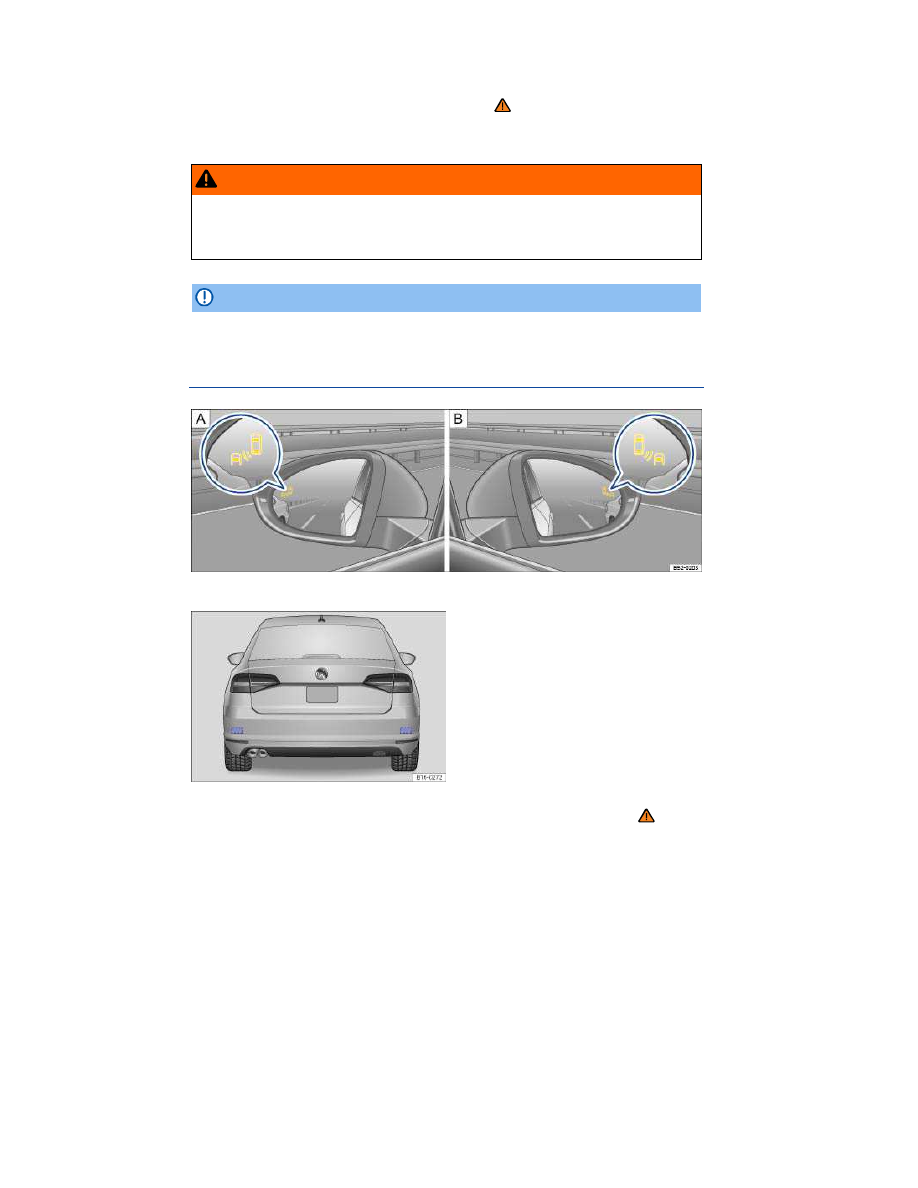Volkswagen Jetta Hybrid (2015 year). Manual - part 18

When the ignition is switched on, several warning and indicator lights come on briefly for a function
check. They go out after a few seconds.
If the indicator light in the outside mirror does not light up, the Blind Spot Monitor does not currently
detect a vehicle in the monitored area around your vehicle
⇒
The brightness of the indicator lights in the outside mirrors are dimmed when the headlights are
switched on (night mode).
WARNING
Failure to heed warning and indicator lights and instrument cluster text messages can result
in a collision and serious personal injury.
Never ignore warning and indicator lights or text WARNINGS.
Always heed warning and indicator lights and take action where necessary.
NOTICE
Failure to heed warning and indicator lights or text WARNINGS can result in vehicle damage.
Blind Spot Monitor
Fig. 137 In the outside mirrors: Indicator lights for the Blind Spot Monitor.
Fig. 138 Rear of the vehicle: Radar sensor areas.
Please first read and note the introductory information and heed the WARNINGS